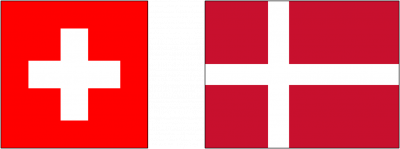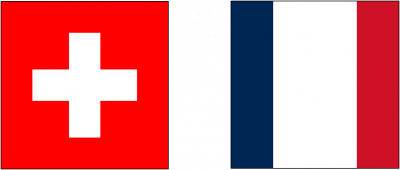Although the Swiss flag seems to perfectly match the characteristics of a country with four official languages, it is the result of pure coincidence. The world-famous national flag has an eventful history over the past seven decades. The Swiss flag was officially declared the national emblem of Switzerland in 1848, but it has been important since 1339, when a white cross on a red background symbolized the unification of the Waldstätten (Uri, Schwyz, Unterwalden and Lucerne) and the canton of Bern in the Battle of Laupen.
It was only in 1450-1520 that the Swiss cross and the Swiss flag became the state emblem of the Old Swiss Confederation. This was intended as a direct distinction from the St. Andrew's Cross of Burgundy, which was used by German mercenaries.
After the end of the Confederate Wars in 1515, Swiss mercenary troops fighting abroad also carried the Swiss cross as a distinguishing mark. However, the flags they used differed in the colors and patterns used in the four corners. These flags often also contained local symbols that indicated the mercenaries' immediate affiliation.
The "Swiss Cross" was first used in war to help soldiers recognize each other on the battlefield. Later, in 1800 and 1815, Niklaus Franz von Bachmann introduced a white cross on a red background as a field symbol for his troops. Since 1815, the federal seal (which was first added to the Federal Treaty) has consisted of a vertical, free-floating, isosceles white cross surrounded by the cantonal arms of the Federal Parliament on a red background.
On the initiative of Guillaume-Henri Dufour, in 1840, the first national Swiss military flag was created. Forty-nine years later, in 1889, the Federal Council determined that the four equally long arms of the cross should be one-sixth longer than wide. During the Helvetian Republic (1798-1803), Napoleon Bonaparte ordered Switzerland to use a tricolor of green, red, and yellow, which was abandoned immediately after his fall.
The law establishes the exact proportions of the white cross and the square shape of the flag. Nevertheless, there are different forms of flags, such as the flag of the Swiss merchant navy. It was created in 1941, and since 1953 it has been defined as rectangular. Athletes at the Olympic Games also march under a rectangular flag, and the Swiss Air Force flies a cockade with a white cross on a red background.








